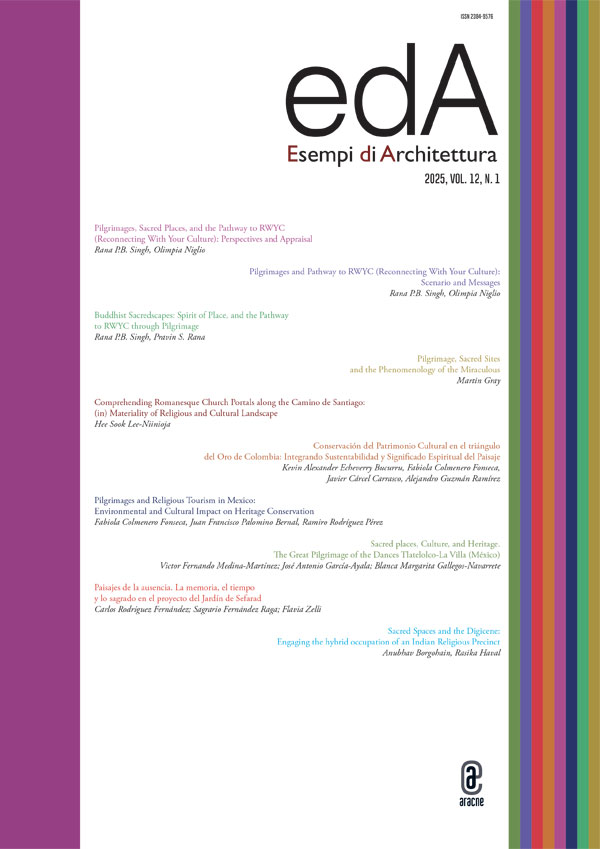Estratto dal volume Esempi di Architettura
Sacred Spaces and the Digicene: Engaging the Hybrid Occupation of an Indian Religious Precinct
DOI: 10.53136/979122181719510
Pagine: 155-167
Data di pubblicazione: Febbraio 2025
Editore: Aracne
SSD:
ICAR/14 ICAR/18 ICAR/20 ICAR/21
This paper delves into the evolving identity within religious cities, focusing on spatial instances referred to as ’religious precincts’. These precincts exhibit functions deeply rooted in the logic of religious and cultural rituals, resembling a cultural Palimpsest. The latest layer added to these precincts is that of the digital realm, considered an additional mode influencing space and relationships globally, similar to other media such as radio and television. By viewing the digital realm as a mode of existence affecting how we live and interact, this research acknowledges its role in mediating relationships worldwide. Contrary to being considered a completely isolated mode of existence, the digital realm is seen as an enabler of contemporary social (religious) relationships. The religious culture within these precincts has undergone a transformation influenced by the digital, evidenced by the migration of many religious expressions into the digital domain. This is particularly notable in India, with instances of e-puja, live darshan, and the emergence of online religious cults and communities. Moreover, the existing Cyberculture, specifically social media platforms like Twitter, Instagram, and Facebook, has become a significant avenue for socially expressing religious experiences and leaving digital footprints. Rather than merely facilitating expression, this study posits these platforms as potential town/village squares, offering opportunities for designers to adapt historic religious contexts to contemporary development pressures with the help of the communities. The research envisions leveraging localized data mining platforms to extract valuable insights from these digital processes, and also provide a forum for the Kamakhya precinct’s sustainable development. These insights, derived from the intersection of digital practices and religious experiences, can inform efficient neighborhood design choices for adapting the historic religious precinct to contemporary development needs. By examining the multifaceted influence of the digital realm on religious practices and expressions, this study aims to contribute to a nuanced understanding of the evolving relationship between technology and religious identity within its cultural context.


